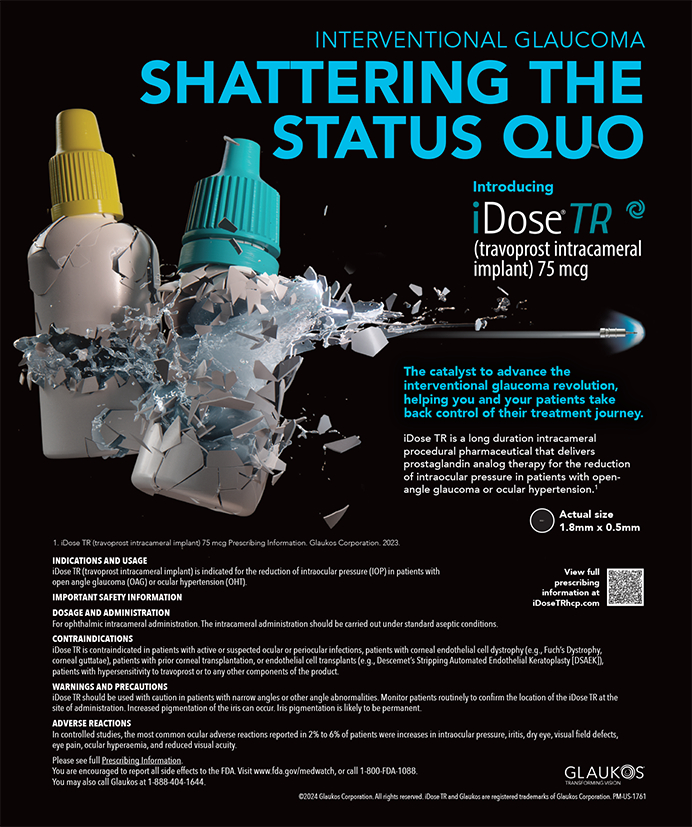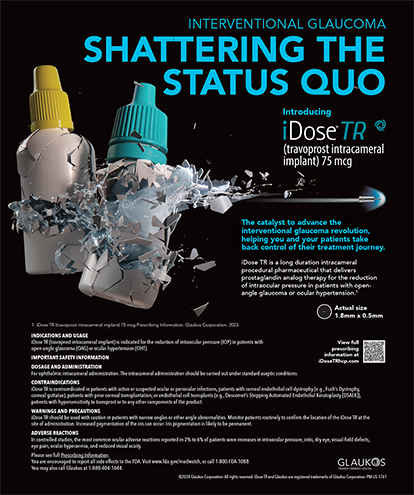Since the introduction of the femtosecond laser for cataract surgery, the landscape of cataract surgery has changed dramatically. Lasers have raised the bar in terms of the accuracy and precision surgeons expect. Having had the opportunity to use and observe demonstrations of several commercially available laser platforms, I have gained a new respect for the power and capabilities they bring to the OR.
With advances in cataract surgery has come a goal of increased safety and efficacy. An unfortunate problem with using ultrasonic energy is the potential for collateral damage to the anterior segment. Endothelial cell loss and shock cause edema and delay visual recovery, and these complications are more common when the nucleus is dense. Ophthalmologists can decrease or eliminate their use of ultrasound by softening the nucleus with a laser and making use of efficient phaco fluidics, advanced handpieces, and adaptive surgical techniques.
SOFTENING PATTERN AND DESIGN
The surgeon applies laser energy in a pattern that breaks the cataract into small pieces. Softening the nucleus decreases the amount of ultrasound that is required to remove nuclear material.
Most of my experience is with the Catalys Precision Laser System (Abbott Medical Optics). Initially, I used a grid pattern of 500 μm, which was truncated by the width of the capsulotomy, and a safety depth of 1,000 μm. These settings modestly but noticeably reduced my use of ultrasound. Over time, the laser’s speed and my comfort with the device allowed me to use a more aggressive softening pattern. Now, I routinely maximize the safety zones and treat to within 500 μm of the posterior capsule and to within 200 μm of the anterior capsule. I widen the treatment well beyond the capsulotomy to within 500 μm of the pupil’s edge. I have also reduced the grid pattern to 200-μm cubes. The Catalys can prechop the nucleus into quadrants, sextants, or octants, depending on the surgeon’s preference or the lens’ density. I typically select quadrant prechop grooves for grade 1 and 2 lenses and octants for grades 3 and 4 lenses. With these settings, I no longer require ultrasound for grades 1 and 2 nuclei, and I have dramatically reduced its use for grades 3 and 4 nuclei.
PHACO MACHINE
To maximize the softening effect of the laser, I recommend taking advantage of the most recent phaco technology. I have used the Centurion Vision System (Alcon), the Stellaris Vision Enhancement System (Bausch + Lomb), and the WhiteStar Signature System (Abbott Medical Optics) after softening the nucleus with the Catalys.
To maximize efficiency, fluidics and pump settings matter. Peristaltic pumps were traditionally prone to postocclusion surge, which can decrease safety. Venturi pumps were known to be powerful vacuum systems but could also present safety concerns, because vacuum occurred immediately without occlusion. With softened nuclei, I find that the Venturi pump allows the most efficient removal of nuclear material, and the peristaltic pump allows the safest removal of cortical material.
A peristaltic pump requires occlusion to permit vacuum to build. Traditionally, surgeons achieve occlusion by burying the tip of the phaco needle in the nuclear pieces. The small fragments of a softened nucleus may not effectively occlude the tip, thus reducing the efficiency of nuclear removal. Because a Venturi pump does not require occlusion for vacuum to build, it can easily aspirate small nuclear pieces when occlusion is not possible.
Cortical removal after laser treatment has its challenges. In order to make a nearly perfect capsulotomy, lasers transect the cortex below the capsule at the same diameter as the capsulotomy. The cortical edge can often be functionally fused to the capsule and challenging to remove. In my experience, Venturi I/A can be difficult during this step, because the vacuum can draw the capsule toward the tip, even when there is no occlusion present. The peristaltic pump, in contrast, will not pull the capsule’s edge unless occlusion is achieved. With a careful technique, a surgeon can occlude the I/A tip with cortex, build vacuum, and then aspirate the cortex without pulling the capsule’s edge.
TOOLS AND TECHNIQUES
My partner Shamik Bafna, MD, and I developed I/A tips with Katalyst Surgical specifically designed for use in eyes with grades 1 and 2 nuclei. The tips are reusable and can be swapped out for different shapes and designs during a case. The model I currently use has a gentle curve with rounded walls for the safe and efficient removal of nuclear material (Figure).
My partner’s preferred technique is the flip. Traditionally, its downside was the application of ultrasound close to the endothelium, which can delay healing. When the lens is softened by a laser, however, Dr. Bafna can use the flip technique with low to zero ultrasound and not cause endothelial trauma.
Surgeons like myself who favor a chopping technique will need to make a slight modification. It can be difficult to “pull” the chopped pieces to the center of the eye during aspiration, because the softened nucleus often falls apart during removal. To avoid this problem, I grab the epinucleus with the tip outside the softened zone and pull this material centrally, where it can then be aspirated effectively.
CONCLUSION
I find the laser augments the efficiency and safety of cataract removal. To decrease or eliminate the use of ultrasound, I recommend maximizing the laser’s softening effect and choosing the fluidics, handpiece, and surgical technique that have been adapted for laser cataract surgery.
Section Editor George O. Waring IV, MD, is the director of refractive surgery and an assistant professor of ophthalmology at the Storm Eye Institute, Medical University of South Carolina. He is also the medical director of the Magill Vision Center in Mt. Pleasant, South Carolina. Dr. Waring may be reached at waringg@musc.edu.
William F. Wiley, MD, is medical director of the Cleveland Eye Clinic and an assistant clinical professor of ophthalmology at University Hospitals/Case Western Reserve University in Cleveland, Ohio. He is a consultant to Abbott Medical Optics. Dr. Wiley may be reached at (440) 840-2020; drwiley@clevelandeyeclinic.com.


